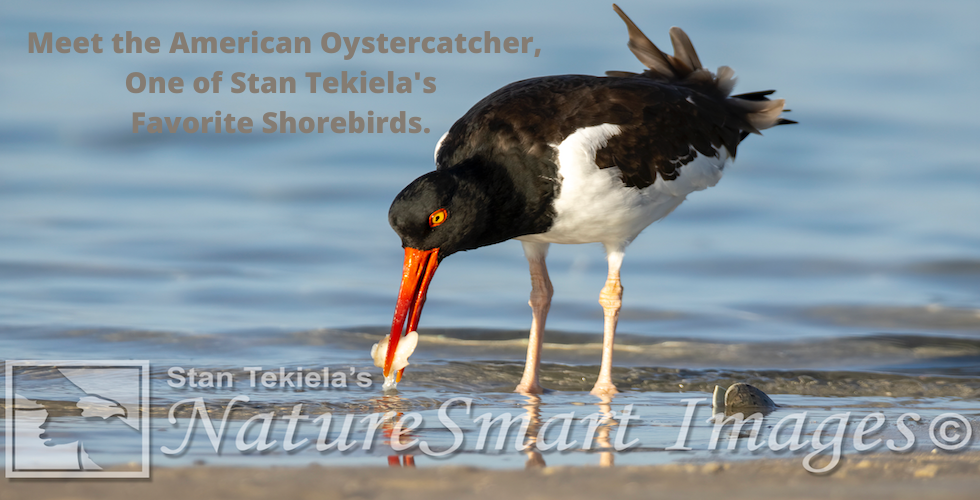
Oystercatchers—One of Stan Tekiela’s Favorite Shorebirds
While leading a photo workshop in warm and sunny Florida, Stan Tekiela was able to to photograph one of his favorite shorebirds, the American Oystercatcher.
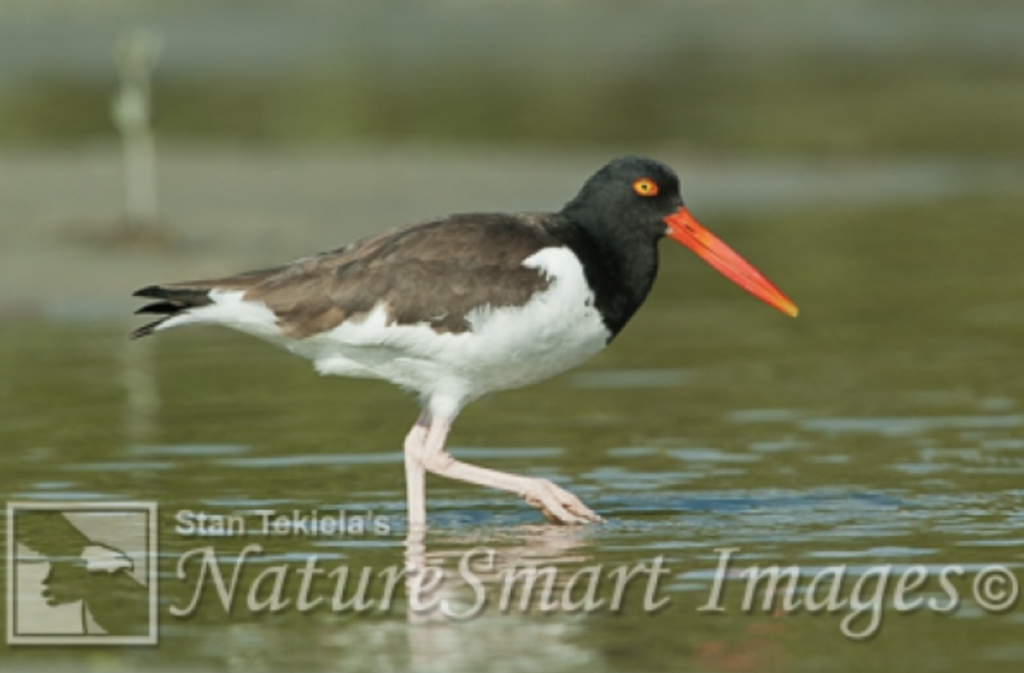
The sun had just come up, spreading a warm, yellowish glow across the sand and the crashing waves at the shore. A warm breeze blew in from the ocean, keeping any bugs away. It was a picture-perfect morning as I walked along a stretch of beach with a group of photographers in tow.
The very first birds we spotted were two tiny Snowy Plovers standing in the sand. These beautiful little birds seemed to be enjoying the tranquil moment that the morning sun was offering. The entire group was able to lie down in the warm sand to capture some eye-level images. It is estimated that there are only about 31,000 breeding pairs of Snowy Plovers in the wild. In 1993 the bird was listed as a threatened species under the Endangered Species Act of 1973. We were all feeling very appreciative to have spent a few minutes with these uncommon birds and to capture some amazing images.

We continued our walk down the beach to a long, sandy hook that curled back towards the shore. The wind was picking up as the sun rose higher in the sky. The wind produced perfect conditions for several Osprey to hover over the ocean, looking for fish in the water below. When they spotted a fish, they would drop from the sky and plunge into the water feet first, grabbing the fish. One Osprey caught such a large fish that it could barely lift it from the water. It flew low across the water to the beach, where it landed in the sand and enjoyed the fruits of its labor.
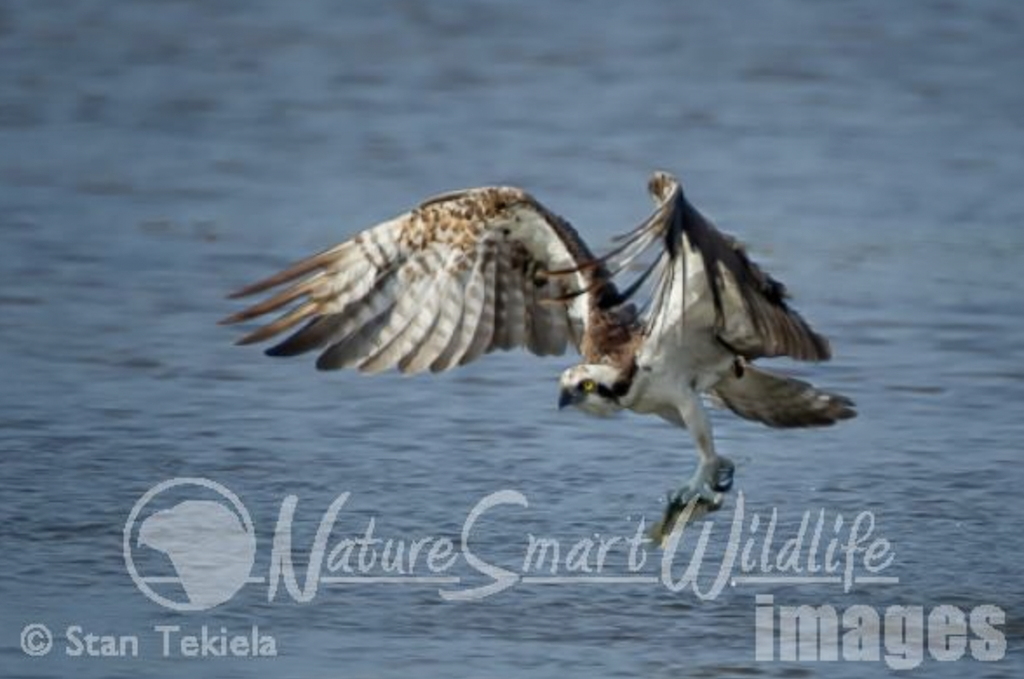
Two hours into the morning walk on the beach, we came to the end of the sandy hook. We couldn’t go any farther, but we didn’t need to because we found what we were looking for. Standing right at the water’s edge was a large and beautiful American Oystercatcher (Haematopus palliates). This amazing-looking bird is one of my favorite shorebirds. It is a large shorebird, the same size as a crow, with striking black-and-white plumage and a huge orange bill that it uses to probe the sand in search of oysters and other crustaceans, plus a bright-orange ring around its yellow eyes.
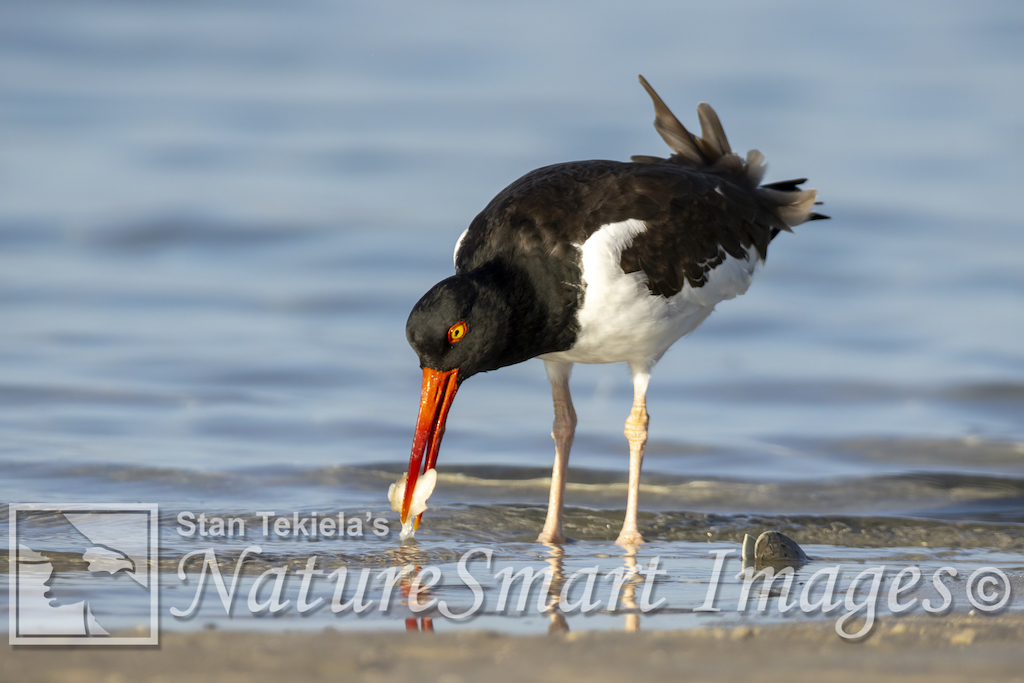
The current population of the American Oystercatcher is only around 43,000, so it is easy to say that we were very lucky to see this bird. We must have been doubly lucky because a second American Oystercatcher flew in shortly after we arrived.
Unfortunately, this bird hasn’t been listed on the federal threatened or endangered species list yet. The population in the US is believed to be stable, but changing sea levels due to climate change can easily impact the population.
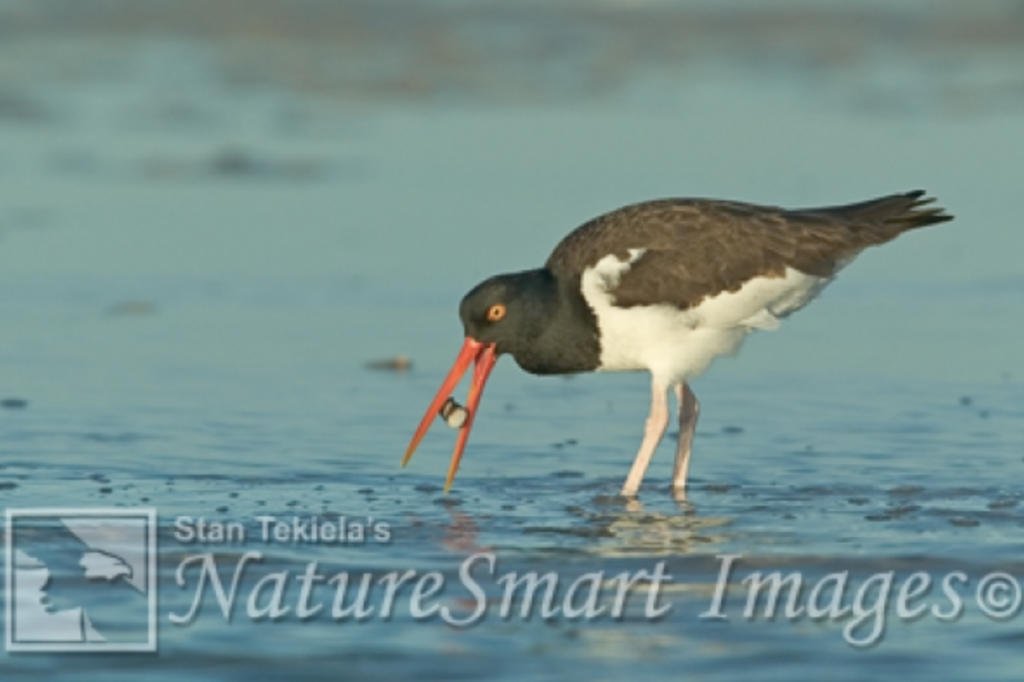
The American Oystercatcher feeds almost exclusively on shellfish. Of course, oysters make up a big part of their diet, but they also eat mussels and clams. Once the shellfish is taken from the sand, the bird uses its bill to sever the muscle that holds the shell tightly together, allowing it to extract the meat inside.
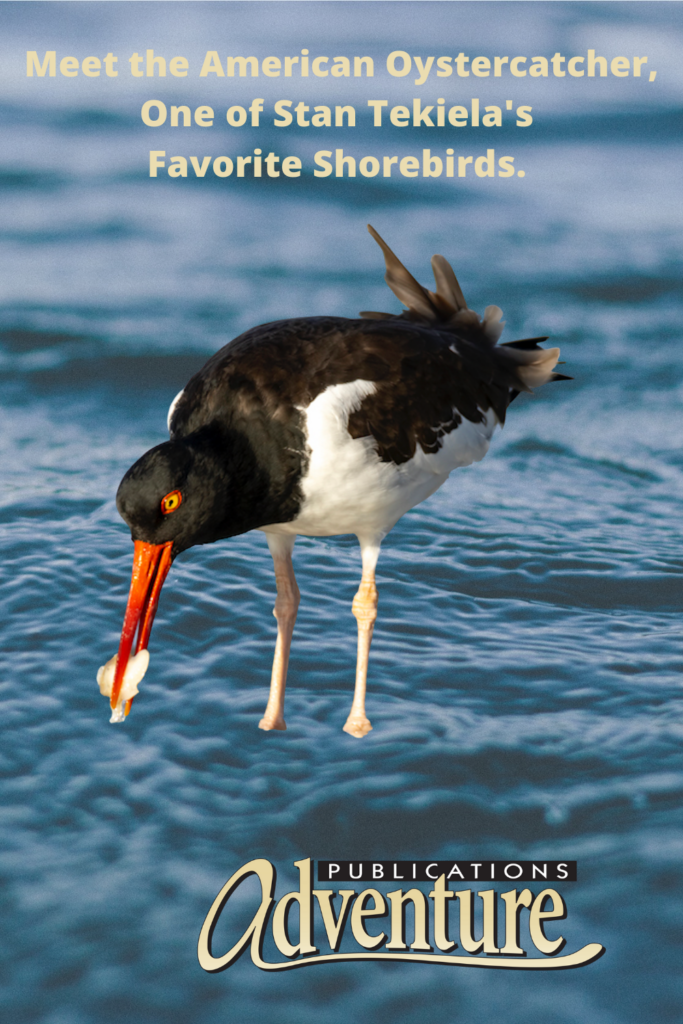
Unlike other shorebirds, the American Oystercatcher doesn’t become sexually mature until it is 3 or 4 years old. They nest directly on beaches and lay only two to three eggs in each nesting cycle. With only a 50% survival rate, they usually produce one viable chick to replace one adult. This means they need at least three nesting seasons to replace both adults and add to the overall population. Combine this with loss of beach habitat and rising sea levels, and you can see why this bird isn’t doing so well.
We captured some amazing images of these two birds, along with several other shorebirds that inhabited the sandy point. The sun started to get too high to produce good images, so we packed up our gear and started the long walk back.
We talked and reflected on the morning and how lucky we were to have seen such rare birds. Everyone was thrilled, but none more so than me.
If you enjoyed Stan’s post, you may enjoy one of his amazing nature books: Wild Birds, Backyard Birds: Welcomed Guests at our Gardens and Feeders, and Bald Eagles: The Ultimate Raptors.
You can follow Stan on Facebook and Twitter, or contact him via his web page. Stan’s nationally syndicated NatureSmart Column appears in more than 25 cities spanning 5 states (Minnesota, Wisconsin, Michigan, Illinois, and Pennsylvania) and is circulated to more than 750,000 readers.
For more stories about wildlife and nature, sign up for our newsletter now!


